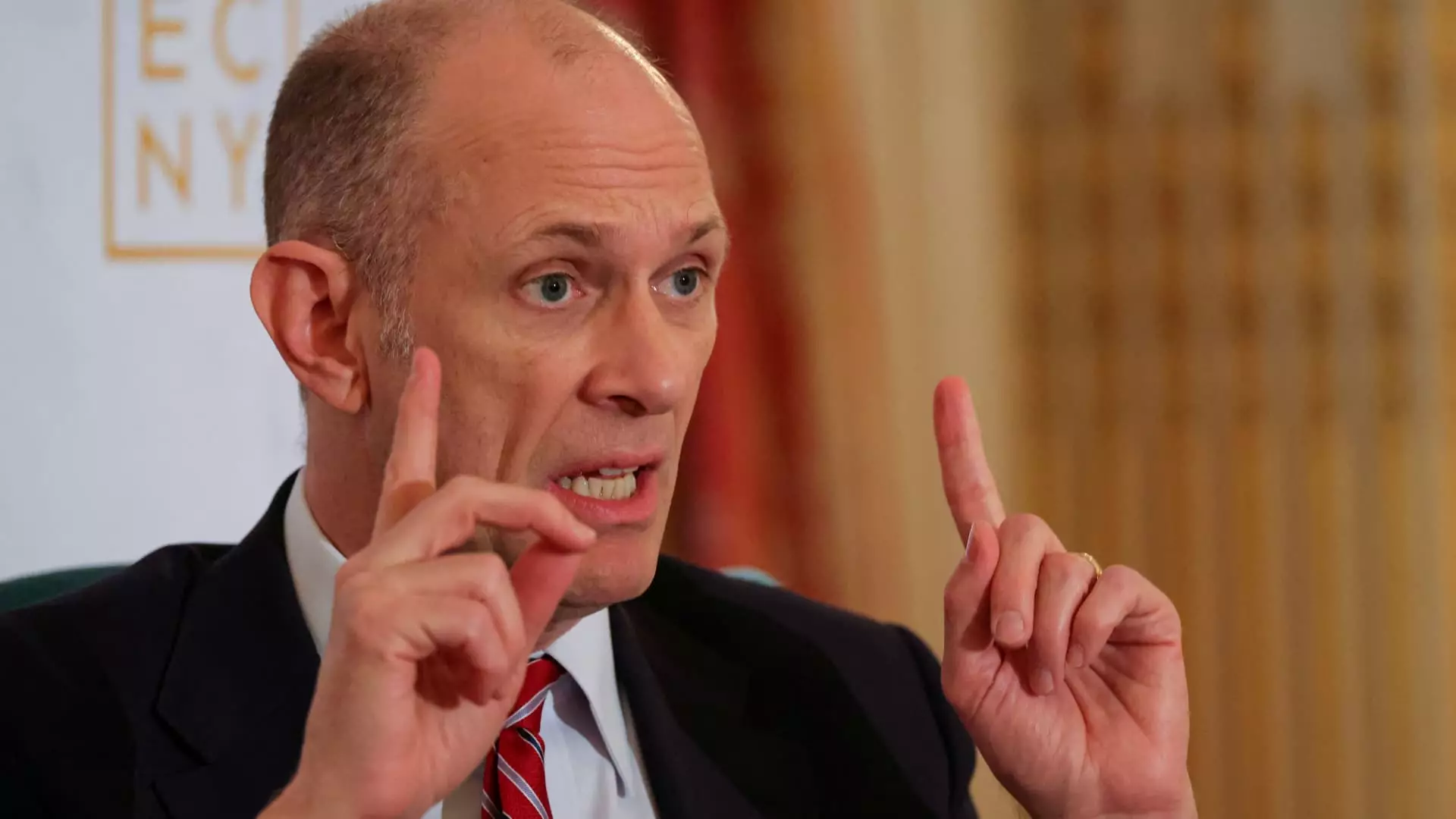The current landscape of economic policy in the United States is fraught with uncertainty, thanks in large part to the unpredictability of President Donald Trump’s trade agenda. Federal Reserve President Austan Goolsbee recently weighed in on these swirling factors, highlighting how Trump’s latest threats to impose steep tariffs—including a jolt to already-challenged markets—have tilted the balance of monetary policy. Goolsbee’s cautious tone during an interview signified that while the long-term outlook may point toward a reduction in interest rates, the Fed will need to remain vigilant and conservatively assess the potential fallout of these tariffs before making any significant policy changes.
In his CNBC segment, Goolsbee indicated that interest rates are more likely to stay stagnant than decrease significantly in the near term, especially as the Fed evaluates the implications of trade policies on inflation and employment levels. This approach sets an alarming precedent, as the complexities introduced by Trump’s trade war could certainly take the economy into uncharted waters, potentially leading to undesirable stagflation—a toxic mix of stagnation and inflation.
The Saber-Rattling Signals Volatility
The trade threats extend beyond mere numbers; they underscore a broader issue of volatility that can, and likely will, affect consumer behavior and business investment. For instance, the announcement of a 50% tariff on European goods set to roll out on June 1, alongside significant tariffs on iPhones made outside the U.S., creates a sense of fear that could paralyze both consumers and producers. While the Fed typically avoids delving into fiscal and trade policy discussions, it finds itself unable to ignore the ripple effects that these tariffs can cause.
The situation is reminiscent of a game of economic chess, with every move having profound implications for both domestic and international markets. The idea that tariffs could be a political tool in the larger game of gaining leverage imposed on allies and adversaries alike presents a precarious picture. The unpredictability renders not just the markets but the entire economy vulnerable to erratic shifts, with inflation looming ominously as many economists suspect the adverse repercussions will soon materialize.
Inflation: The Price We All Pay
Goolsbee noted one undeniable truth: “I know people hate inflation.” It’s a sentiment many Americans can rally behind, as rising prices affect purchasing power and ultimately the standard of living. Tariffs serve as a hidden tax that consumers must absorb. While the immediate economic implications may appear manageable, the long-term impacts—coupling increased costs with decreased wage growth—may boil over into public discontent. A government that negates the stability of free trade, showcasing rewards for disruptive and erratic behavior, is steering the ship into potentially dangerous waters.
Indeed, a reality where inflation creeps up while the economy limps along is the worst-case scenario, one that Goolsbee and others worry is encroaching. The Fed’s role then shifts from managing growth to frantically averting crisis, and the burden of poor fiscal legislation falls on the shoulders of policymakers who have a responsibility to foster a stable economic environment.
Hope on the Horizon? The Economic Janus
Despite these challenges, Goolsbee remains cautiously hopeful that the economy can rebound. Focusing on a trajectory of solid growth and a favorable employment landscape is the preferred narrative, but the questions remain: Is this optimism premature? Can political maneuvering create the environment necessary for stability? While some analysts may share Goolsbee’s perspective that interest rates could decline significantly over the next 12 to 18 months, the central bank must tread carefully, especially when tethered to a government that thrives on upheaval.
Furthermore, it is worth discerning the economic trajectory from the chaos of trade disputes and political maneuvering. The potential for rate cuts from the Federal Reserve hinges on inflation rates returning to a manageable level alongside significant employment. However, if overarching policies continue to sow confusion, it won’t be long before the economy bears the brunt of these miscalculations.
Addressing the larger question of where the landscape stands right now, we find ourselves in a complicated balancing act. The ongoing economic decisions of today directly influence how we navigate the pitfalls of fiscal uncertainty in the future. As we await clarity amidst the chaos, one thing remains abundantly clear: a stable economy cannot exist in a world of reckless tariff threats that serve more as leverage than sound policy.

